Framework
"Education is not a subject and does not deal in subjects. It is instead a transfer of a way of life."
G. K. Chesterton
Out of the many educational theories and practices that exist today, can we extract general principles into a practical model of education that centers on meaningful real-world contexts? Perhaps the best adjective to describe such a "theory of everything" in education would be "authentic," originating from the Greek word "authentikos" meaning "original, genuine, or principal." This Greek term is derived from "authentes," which refers to someone acting on their own authority, combining "autos" (self) and "hentes" (doer, being).

Thus, it conveys the sense of something being genuine or carried out with original authority. In other words, the term "authentic" signifies something that is "worthy of trust, from an undisputed origin, and executed in a manner to produce effectiveness." The 1828 Noah Webster's American Dictionary of the English Language defines authentic as:
"1. Having a genuine original or authority, in opposition to that which is false, fictitious, or counterfeit; being what it purports to be; genuine; true; applied to things; as an authentic paper or register.
2. Of approved authority; as an authentic writer."
Authenticity refers to a trait of personality recognized in psychology, existential psychotherapy, existentialist philosophy, and aesthetics. Within existentialism, it describes how closely an individual's behaviors align with their own values and aspirations, even in the face of societal norms and pressures pushing towards conformity.
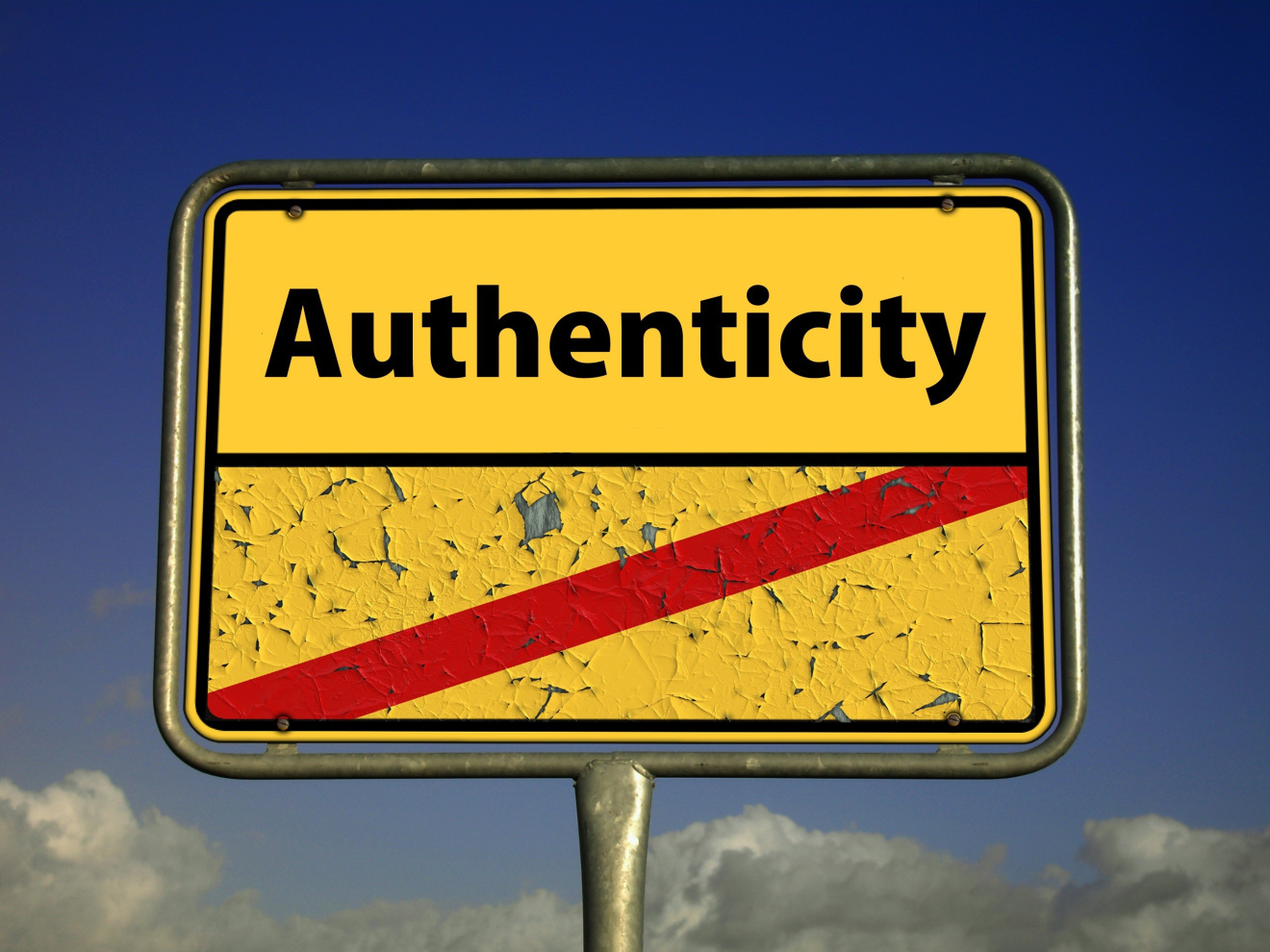
Authentic education (system-level) has at least three levels of practical implementation including authentic administration (administrator-level) and authentic teaching (teacher-level) with the goal of authentic learning (student-level). All levels focus on the creation of an "authentic learning environment" that fosters "authentic learning experiences" which is a process that usually begins with "authentic relationships." Authentic learning is connected to the real world and happens naturally as a biproduct of living and accomplishing goals. It can be said that all learning was once authentic and we need to return to this classical education. Authentic learning is an umbrella term covering more specific types of learning such as situated, experiential, high-impact, Montessori, place-based, service, immersion, inquiry-based, collaborative, project-based, problem-based, case-based, simulation-based, discussion-based, story-based, and more.
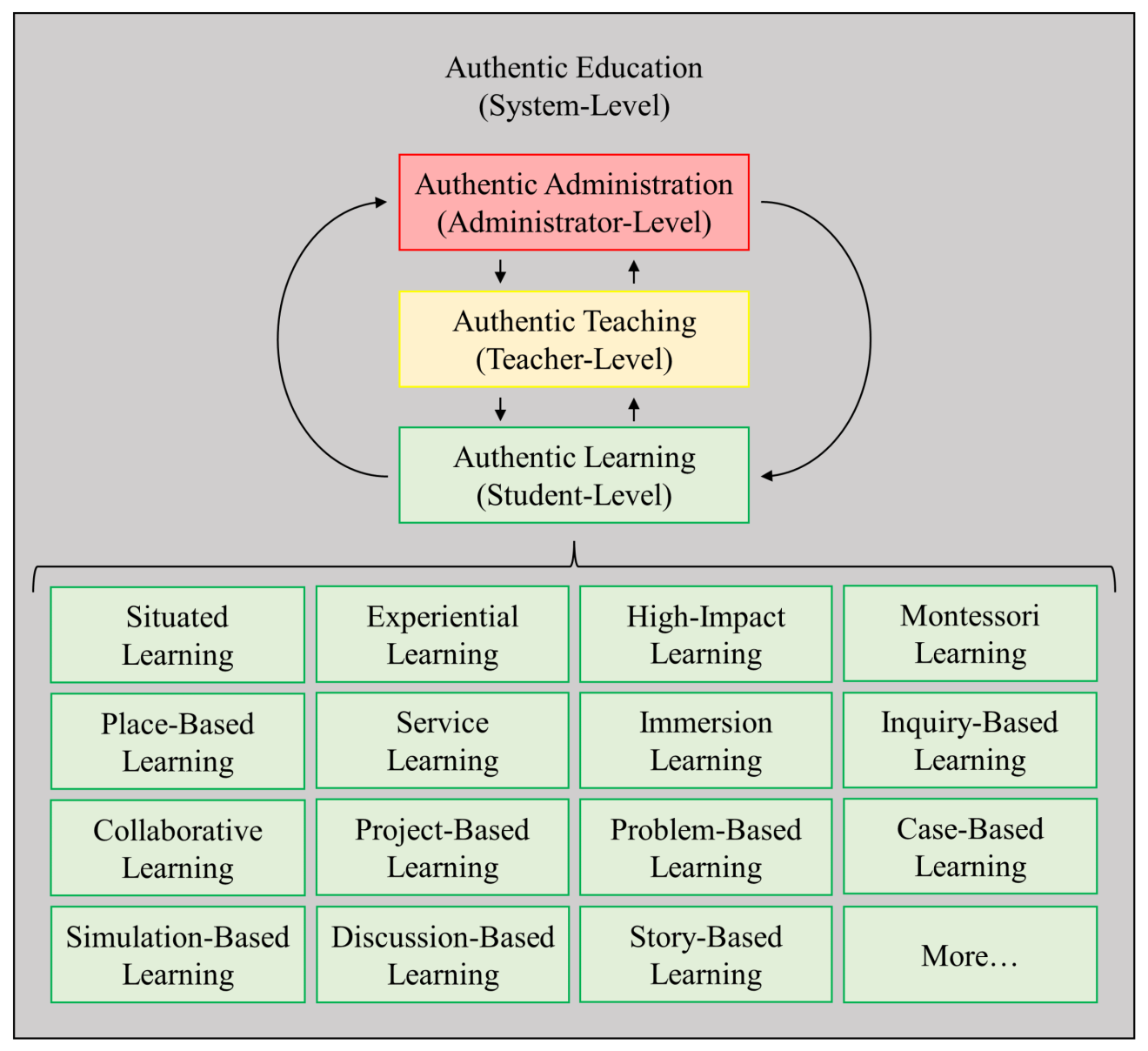
Some of the main characteristics of educational authenticity can be organized into Planning, Progress, Partnership, Implementation, Inspiration, Integration, Evaluation, Expertise, and Expression (PIE) in the categories of Genuine Design, Purposeful Guidance, and Structured Communication (GPS). A good litmus test for authenticity would involve asking a student why they are learning something. If the learning is authentic, a student should always know why they are learning a particular concept since it is naturally embedded into a meaningful, real-world context that creates unquestionable purpose. For example, you can research how to build a deck for the next month. Learning may take place, but it is not authentic unless you are actually involved in designing and/or building one, favoring a "learning by doing" approach. Authentic learning builds 21st century skills such as collaboration, creativity, critical thinking, problem solving, adaptability, global awareness, information literacy, leadership, citizenship/social responsibility, effective oral and written communication, technological literacy, and initiative.
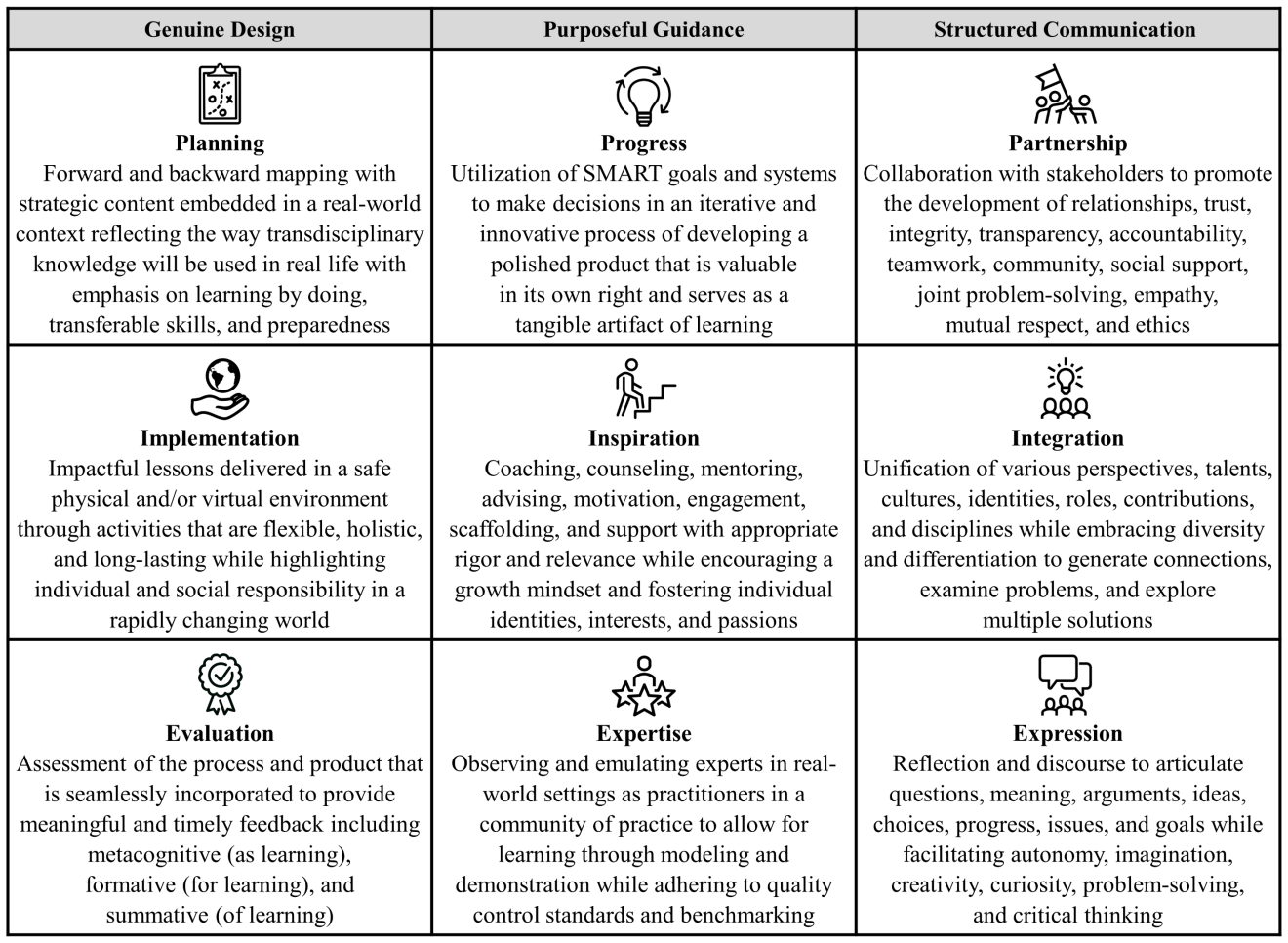
Dr. Lyon's new Authentic HAMSTER Education framework focuses on both curriculum and instruction. HAMSTER is a progression from the more common STEM, STEAM, and STREAM acronyms. The seven fundamental disciplines of Healthcare, Art, Mathematics, Science, Technology, Engineering, and Religion rotate like a hamster wheel to illustrate learning as a continuous and lifelong activity with blurry lines between disciplines. Seven is a number of divine completion, wholeness, and perfection relating to the days in a week, continents on Earth, colors in a rainbow, and more. Importantly, this framework acknowledges that the real world does not neatly categorize itself into disciplines; these are human constructs designed to simplify the complex, transdisciplinary nature of our world into comprehensible cognitive schemas.
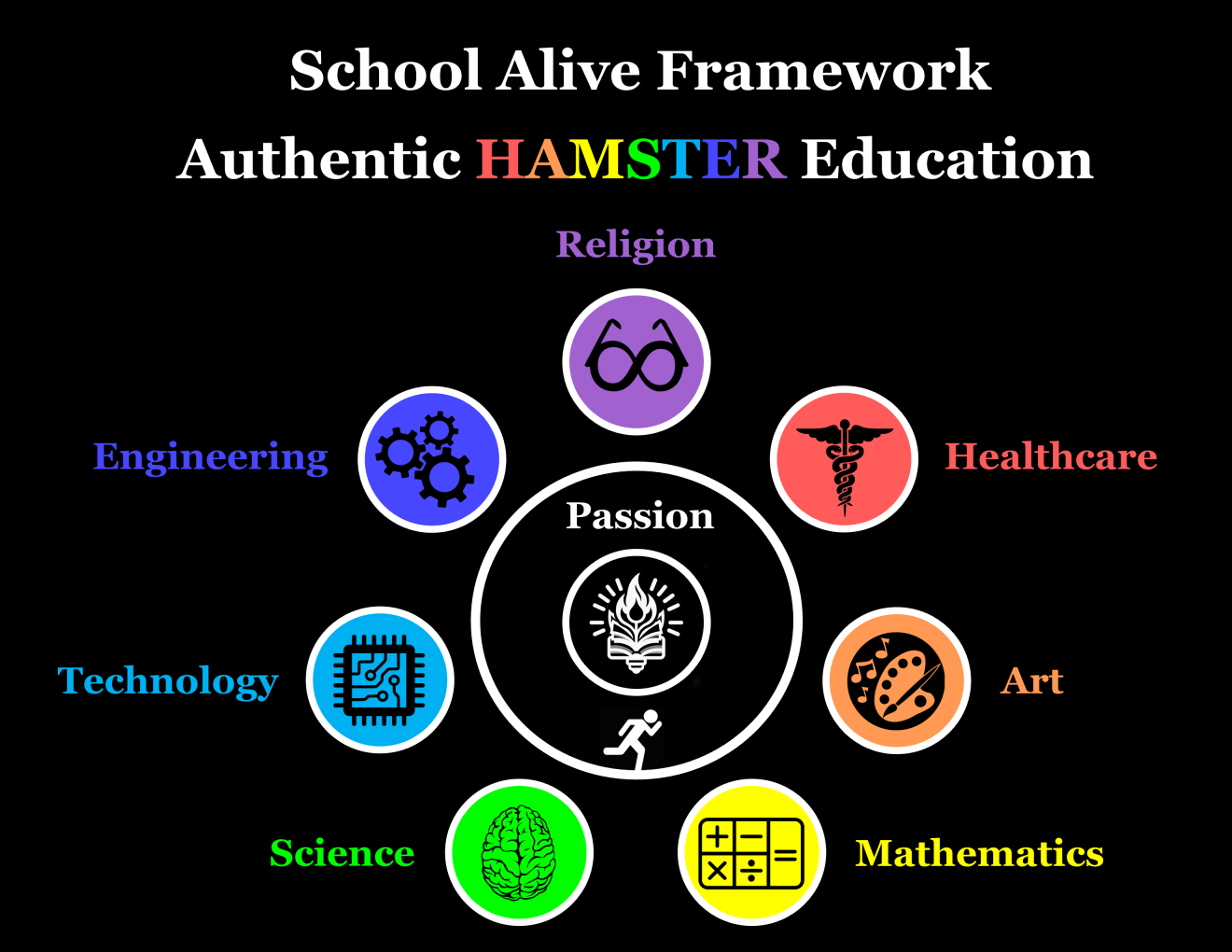
- Healthcare is the prevention, treatment, and management of illness as well as the preservation of physical, mental, and spiritual well-being.
-
Art is the conscious use of the imagination in the production of objects intended to be contemplated or appreciated as beautiful, as in the arrangement of forms, sounds, or words.
-
Mathematics is the calculation, measurement, properties, and relationships of quantities as well as logical reasoning and pattern recognition.
-
Science is the systematic discovery, construction, and organization of knowledge as a continuous exploration of mysteries in pursuit of predictive and explanatory power.
- Technology is the sum of objects, tools, knowledge, processes, products, techniques, developers, and users emerging from and driving goals.
- Engineering is the application of knowledge and heuristics to iteratively design, develop, and implement products and processes defined by criteria under constraints to solve problems, meet society’s needs, and advance the state of the art.
- Religion is the system of sincere beliefs and behaviors that recognize the sacred which is set apart from society as extraordinary, inspiring awe, and deserving of reverence while establishing a worldview revolving around the cause, nature, and purpose of the universe.
- Passion is the deeply-rooted love for a specific calling that not only fuels intense emotional commitment but also demands the willingness to make sacrifices, embodying the balance between fervor and the conscious choice to "pick up one's cross" for a greater purpose.
At School Alive, we offer an educational experience that transcends traditional paradigms, seamlessly blending our HAMSTER Periods with a Passion Period. While HAMSTER Periods lay the groundwork in Healthcare, Art, Mathematics, Science, Technology, Engineering, and Religion, our Passion Period enriches this foundation, providing students the opportunity to explore and exercise their individual passions. This synergetic approach essentially adds "HARP" to "STEM" — Healthcare, Art, Religion, and Passion dovetailing with Science, Technology, Engineering, and Mathematics.

In Christian symbolism, the harp is revered as an emblem of divine harmony and worship, evoking images of King David and heavenly chorales. Just as the harp creates beautiful music, our HARP complements STEM disciplines, orchestrating an education that is both holistic and heavenly. In this setting, "P" not only stands for Passion but also for Principal, rounding out the faculty roles essential for a vibrant learning community. While Passion is not a fundamental academic discipline like the core HAMSTER disciplines, it is the crucible where students discover their God-given purpose. By exploring varied disciplines through HAMSTER Periods, students identify their passion, which they can then cultivate during the Passion Period. This allows us to "HARP" on the inadequacy of STEM alone, fulfilling our mission to shape a future guided by both 21st-century skills and timeless Christian values.
Healthcare

🏥 Caring Healthcarist
Healthcare is the prevention, treatment, and management of illness as well as the preservation of physical, mental, and spiritual well-being.
Example Habits
- Regular Exercise
- Meal Planning
- Wellness Check
- First Aid Training
Example Overview
-
Level 1: Basic hygiene practices, such as hand washing and brushing teeth
-
Level 2: Nutrition and healthy eating habits
-
Level 3: The human body and its functions
-
Level 4: First aid and emergency response
-
Level 5: Disease prevention and management
-
Level 6: Mental health and wellness
-
Level 7: Global health issues and healthcare systems
Example Content
-
Health Science
-
Anatomy & Physiology
-
Epidemiology & Public Health
-
Toxicology & Pharmacology
-
Body Systems (ex. Digestive)
-
Structure & Function
-
Diagnosis & Prognosis
-
Blood Type (ABO and Rh system)
-
Blood Pressure (Systolic/Diastolic)
- Human Development (Conception to Death)
-
- Personal Healthcare
- Exercise (ex. Biking, Running, and Lifting)
- Nutrition (ex. Diet, Cooking, Farming, Gardening)
-
Food Preservation (ex. Canning, dehydration, freeze drying, vacuum sealing)
- Emergency Preparedness and Safety
- Preparedness and Survival
- Firearm Safety and Self Defense
-
First Aid (CPR, AED, Choking)
- Human Sexuality & Natural Family Planning
-
Interpersonal Relationships
-
Caretaking and Empathy (ex. Pets, Bedside Manner, Hospitality)
-
Hygiene (ex. Cleaning, brushing/flossing teeth, coughing, sneezing)
- Over-The-Counter (OTC) Medications
-
Clinical Healthcare
-
Health Insurance
-
Life Insurance
-
Specialties
-
Pathology (Diseases)
-
Neurology (Brain)
-
Anesthesiology
-
Dermatology (Skin)
-
Oncology (Cancer)
-
Ophthalmology (Eyes)
-
Veterinary Medicine (Animal)
-
Dentistry (Oral/Mouth)
-
Clinical psychology (Mind)
-
Biblical counseling (Spirit)
-
-
Prescription Medications
-
Art
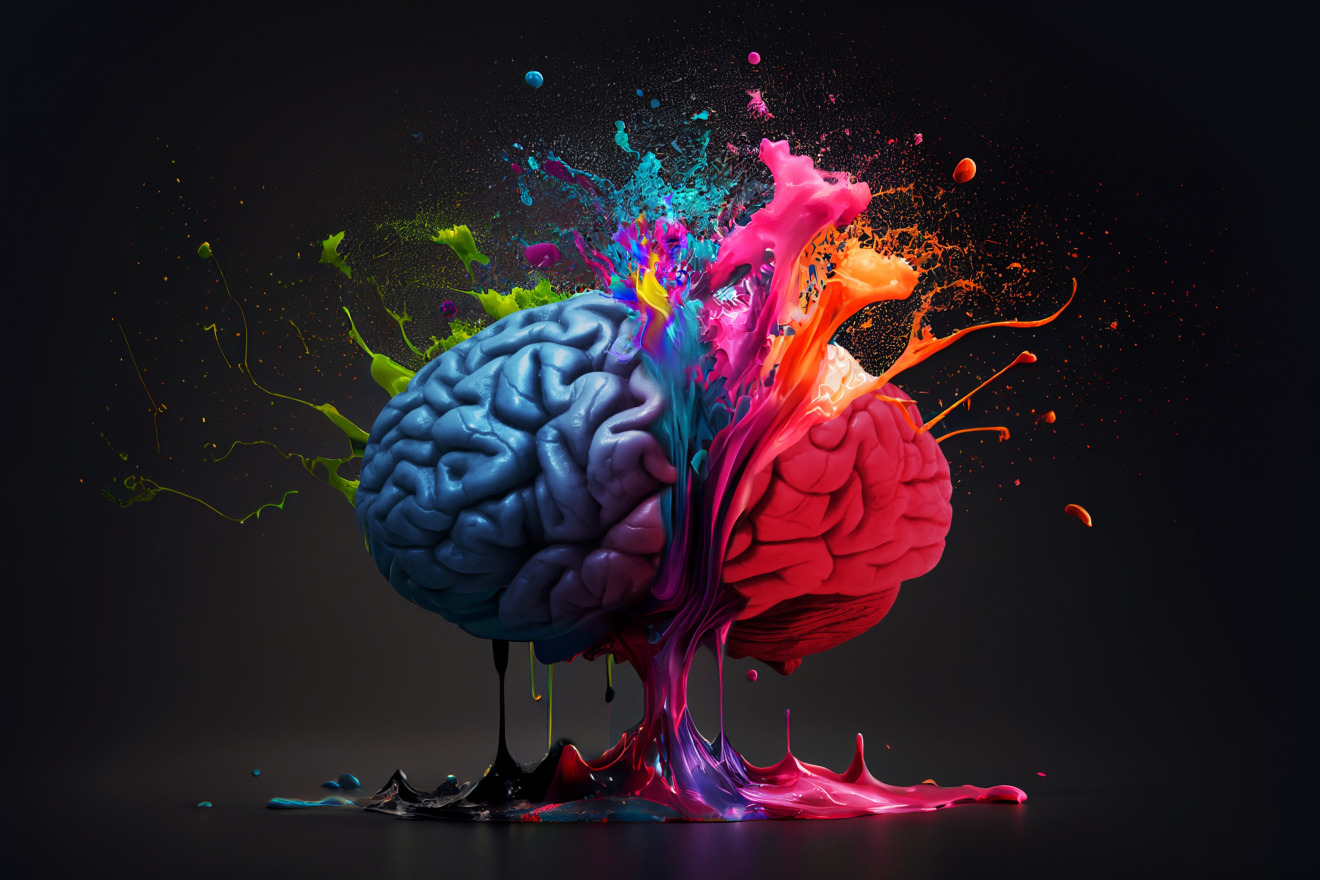
🎨 Colorful Artist
Art is the conscious use of the imagination in the production of objects intended to be contemplated or appreciated as beautiful, as in the arrangement of forms, sounds, or words.
Example Habits
- Sketching, Doodling, or Journaling
- Creative Writing and Language Learning
- Attending Art Exhibits/Museums
- Listening to Different Genres of Music
Example Overview
- Level 1: Basics of grammar, colors, shapes, and rhythm
- Level 2: Introduction to drawing, storytelling, and simple choreography
- Level 3: Merging shading techniques with poetry and basic stage presence
- Level 4: Exploring the Renaissance's influence on various art forms
- Level 5: Landscape painting paired with classical literature and musical themes
- Level 6: Integrating graphic design, screenplay writing, and electronic music
- Level 7: Comparative critique across language, visual, and performing arts
Example Content
- Language Arts
- Fiction (Not Factual) Books
- Literature
- Poetry
- Reading
- Writing
- Riddles
- Public Speaking
- Communication
- Paragraphs, Sentences, Phrases, Words, Letters
- Visual Arts
- Symmetry
- Painting
- Drawing
- Sculpting
- Ceramics
- Sewing
- Beauty
- Food Art
- Colors
- Performing Arts
- Art of War
- Art Show
- Talent Show
- Play
- Musical
- Comedy (Vehicle for Truth)
- Magic
- Entertainment
- Music
- Martial Arts
- Chorus
- Singing
- Gymnastics
- Dance
Mathematics
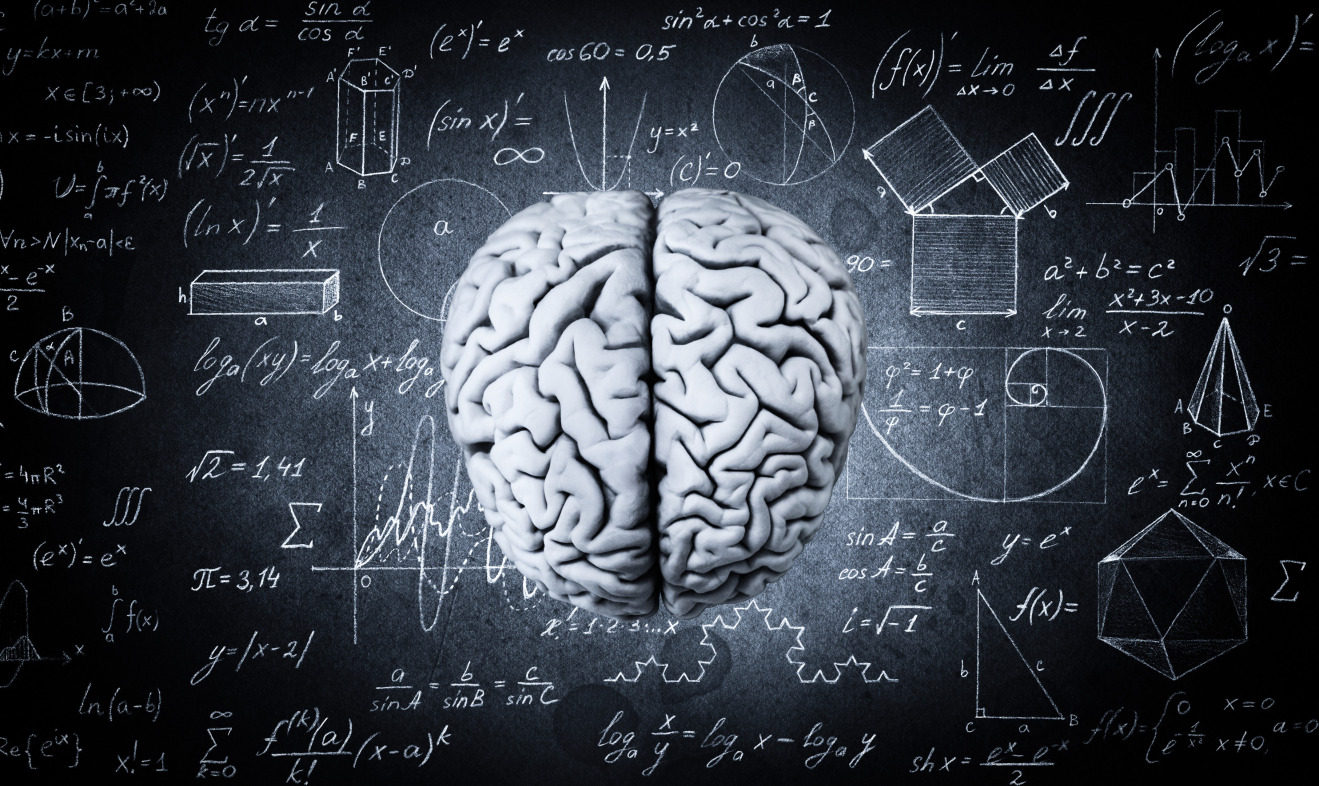
🎲 Calculated Mathematist
Mathematics is the calculation, measurement, properties, and relationships of quantities as well as logical reasoning and pattern recognition.
Example Habits
- Solving Math Puzzles
- Budget Planning
- Review of Personal Finances
- Keeping a Problem-Solving Journal
Example Overview
- Level 1: Simple counting, addition, subtraction, and money concepts
- Level 2: Multiplication, division, budgeting, and measurement
- Level 3: Fractions, decimals, percentages, and variables
- Level 4: Algebra, Geometry, equations, and growth/decay models
- Level 5: Statistics, Trigonometry, Calculus, and compound interest
- Level 6: Differential Equations, Linear Algebra, and Financial Risk Analysis
- Level 7: Advanced concepts and proofs with real-world applications
Example Content
- Pure Mathematics
- Calculus
- Differential equations
- Trigonometry
- Geometry
-
Probability
-
Algebra
-
Statistics
-
Logic, Reasoning, & Proofs
-
Patterns
-
Graphing
- Fractions, Decimals, & Percentages
- Multiplication & Division
- Addition & Subtraction
- Counting & Numbers
- Applied Mathematics
- Mathematical Science (ex. Physics, Forensics)
- Mathematical Technology (ex. Calculator, Abacus, Desmos)
- Pareto distribution
- Moore's law
- Murphy's law
- Normal curve
- Fibonacci sequence
- Logistic and Exponential Growth and Decay
- Economics
- Compound Interest
- Financial literacy
- Give, Save, Spend, Invest
- Budget
- Business
- Supply & Demand
- Loans
- Debt
- Grants
- Taxes
- Accounting
- Money
Science
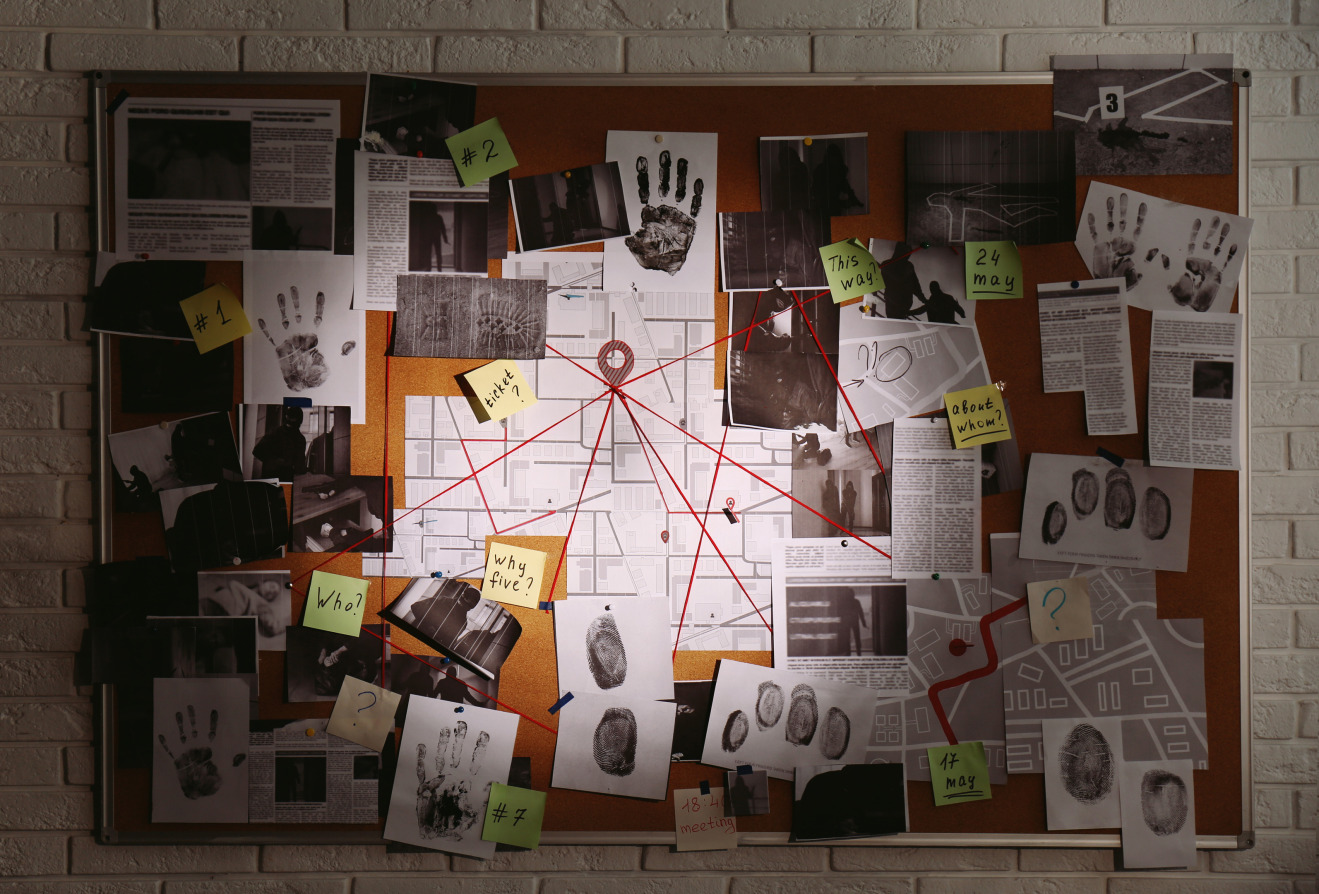
🔬 Curious Scientist
Science is the systematic discovery, construction, and organization of knowledge as a continuous exploration of mysteries in pursuit of predictive and explanatory power.
Example Habits
- Nature Walks to Observe Flora and Fauna
- Experiments, Investigations, Research, Socratic Seminars
- Book Reading on Various Scientific Topics
- Mind Maps and Keeping an Inquiry Journal
Example Overview
- Level 1: Introduction to the natural world and the scientific method
- Level 2: Earth science and geology
- Level 3: Biology and ecosystems
- Level 4: Chemistry and the periodic table
- Level 5: Physics and mechanics
- Level 6: Astronomy and cosmology
- Level 7: Cutting-edge research and scientific breakthroughs
Example Content
- Science Practices
- Curiosity and Questions
- Scholarship
- Non-Fiction (Factual) Books
- Peer-Reviewed Research Journals
- Science Fair
- Methodology
- Exploration & Experimentation
- Tests & Evidence
- Observation & Nature
- Review & Revise
- Science Research Process (SRP)
- Purpose
- Background
- Hypothesis
- Methods
- Analysis
- Findings
- Report
- Natural Science
- Physical Science
- Physics
- Chemistry
- Ex. Matter, Atoms, Molecules, Compounds, Density, Reactions, Energy, Motion
- Earth and Space Science
- Geology
- Astronomy
- Meteorology
- Climate
- Life Science
- Biology
- Genetics
- Zoology
- Psychology
-
Ex. Microevolution, Cell theory, Biomolecules such as DNA, Origin of Life, Intelligent Design
- Physical Science
- Social Science
- Political Science
- Historical Science
- Anthropology
- Law
- Biography
- Geography
- Forensic Science
- Family and Consumer Science
Technology

🖥 Clever Technologist
Technology is the sum of objects, tools, knowledge, processes, products, techniques, developers, and users emerging from and driving goals.
Example Habits
-
Keyboard Skills & Programming Languages
-
Exploration of New Software or Apps
-
Updates and Security Checks on All Devices
-
Review of Emerging Technologies
Example Overview
- Level 1: Basic computer skills and internet safety
- Level 2: Software applications and programming fundamentals
- Level 3: Web design and development
- Level 4: Mobile app development and user experience
- Level 5: Data analytics and machine learning
- Level 6: Robotics and automation
- Level 7: Emerging technologies and their impact on society
Example Content
- Using Existing Technology
- Artificial Intelligence (AI)
- Virtual Reality (VR) & Augmented Reality (AR)
- Machine Learning & Deep Learning
- Generative Technology
- Language (Chat GPT)
- Image (DALL-E)
- Productivity Technology
- Docs/Word
- Sheets/Excel
- Slides/PowerPoint
- Audiovisual Media Technology
- Game (Unity)
- Video (DaVinci Resolve)
- Raster Image (GIMP)
- Vector Image (Inkscape)
- Audio (Audacity)
- Robotics (Vex, First, Other)
- Microcontrollers (Arduino & Raspberry Pi)
-
Coding Languages and Frameworks
-
Computers and Computer Hardware/Software
-
Front-End & Back-End Application Development
-
User Interface (UI) and User Experience (UX) Design
-
Information Technology (IT)
-
Educational Technology & Games
-
Internet Safety & Cybersecurity
-
Cloud Computing & Data Storage Solutions
-
Database Management
-
Internet of Things (IoT)
-
LED lighting
-
Automation
-
Self-driving vehicles
-
Educational Technology & Games
- Basic Tools & Technology Toys
Engineering

🔨 Creative Engineerist
Engineering is the application of knowledge and heuristics to iteratively design, develop, and implement products and processes defined by criteria under constraints to solve problems, meet society’s needs, and advance the state of the art.
Example Habits
- Engineering Design Challenge
- Keeping an Engineering Notebook
- DIY Projects and Engineering Design Process
- Building or Tinkering with Physical Models
Example Overview
- Level 1: Introduction to design with reverse engineering
- Level 2: Simple machines and mechanics
- Level 3: Electrical circuits and electronics
- Level 4: Construction skills and building structures
- Level 5: Material science and engineering design
- Level 6: Sustainable design and renewable energy
- Level 7: Innovative engineering solutions to complex problems
Example Content
- Engineering Practices
- Creativity and Problems
- Developing New Technology
-
Smart Goals & Project Management
-
Criteria & Constraint
-
Iterative & Cyclical Process
-
Engineering Design Process (EDP)
- Identification
-
Specification
- Ideation
- Prototyping
- Delivery
- Maintenance
- Redesign or Retirement
-
Projects
-
Community Partnership and Stakeholders
-
Engineering Projects in Community Service (EPICS)
-
Vertically Integrated Projects (VIP)
-
-
Specializations
-
Civil Engineering
-
Biomedical Engineering
-
Mechanical Engineering
-
Electrical Engineering
-
Structural Engineering
-
Aerospace
-
Architectural
-
-
Trades and Technical Skills
-
Carpentry
-
Plumbing
-
Welding
-
Electrical Installation
-
Energy Resources
-
-
Computer-Aided Design (CAD)
-
Onshape, FreeCAD, Sketchup, Solidworks, Fusion 360, etc.
-
-
Computer-Aided Manufacturing (CAM)
- Computer Numerical Control (CNC)
-
Additive and Subtractive Manufacturing Techniques
-
3D Printing, Laser Cutting, Milling, etc.
-
-
Design Challenges & Reverse engineering
-
Interior/Exterior Design and Floorplanning
-
Material Science & Testing
-
Renewable Energy & Sustainability
- Legos, Gears, Blocks
Religion

♾️ Communal Religionist
Religion is the system of sincere beliefs and behaviors that recognize the sacred which is set apart from society as extraordinary, inspiring awe, and deserving of reverence while establishing a worldview revolving around the cause, nature, and purpose of the universe.
Example Habits
- Devotional, Prayer, or Spiritual Journaling
- Attendance of Religious Services or Gatherings
- Volunteering or Charity Work
- Bible Study and Reading for Spiritual Growth
Example Overview
- Level 1: God's love and care for us
- Level 2: Biblical stories and their meanings
- Level 3: The life and teachings of Jesus Christ
- Level 4: Comparative religion and philosophy
- Level 5: Ethics and morality in religious traditions
- Level 6: Interfaith dialogue and advanced apologetics
- Level 7: Religious diversity and its implications for global society
Example Content
-
Religion Practices
-
Prayer & Worship
-
Fellowship & Discipleship
-
Citizenship & Service
- Ministry & Charity
- Church & Small Groups
-
- Philosophy
- Ontology (Being)
- Epistemology (Knowledge)
- Axiology (Aesthetics & Ethics, Value, Virtue, Morality, Manners, Etiquette)
- Theology
- Apologetics (Defense)
- Hermeneutics (Interpretation)
- Eschatology (End Times)
- Holy Trinity (Father, Son, Spirit)
- Human Trinity (Body, Soul, Spirit)
- Bible Study & Stories
- Plan & Purpose
- Gifts & Fruits of the Holy Spirit
- World Views
- Atheism
- Agnosticism
- Theism
- Monotheism
- Polytheism
-
Pantheism & Deism
- World Religions
- Abrahamic Religions
- Christianity
- Judaism
- Islam
- East Asian Religions
- Taoism
- Confucianism
- Shintoism
- Indian Religions
- Jainism & Sikhism
- Buddhism & Hinduism
- Indigenous Religions
- Native American (Navajo & Lakota)
- Shamanism
- Secular Religions
- Humanism
- Naturalism & Materialism
- Scientism & Scientology
- Existentialism & Nihilism
- Abrahamic Religions
- World Ideologies
- Patriotism
- Capitalism & Marxism
- Socialism & Communism
- Modernism & Postmodernism
- Nationalism & Globalism
- Feminism & Environmentalism
- Liberalism & Libertarianism
- Conservatism & Progressivism
- Jesus Identity
-
Legend, Lunatic, Liar, or Lord (4 L)
-
What Did Jesus Do?
-
What Would Jesus Do? (WWJD)
-
- ALIVE Resurrection Evidence
-
A Death By Crucifixion
-
Ladies Find Tomb Empty
-
Independent Appearances After Death
-
Violence Endured By Apostles
-
Enemies Of Christ Converted
-
-
MISTAKE Resurrection Theories
-
Mistaken Death (Swoon/He Never Died)
-
Imaginary Sightings (Mass Hallucination)
-
Spiritual Resurrection (No Physical)
-
Twin Deception (Secret Twin Died)
-
Alternate Tomb (Went To Wrong Tomb)
-
Kidnapped Corpse (Missing/Stolen Body)
-
Engineered Plot (Conspiracy/Intentional Lie)
-
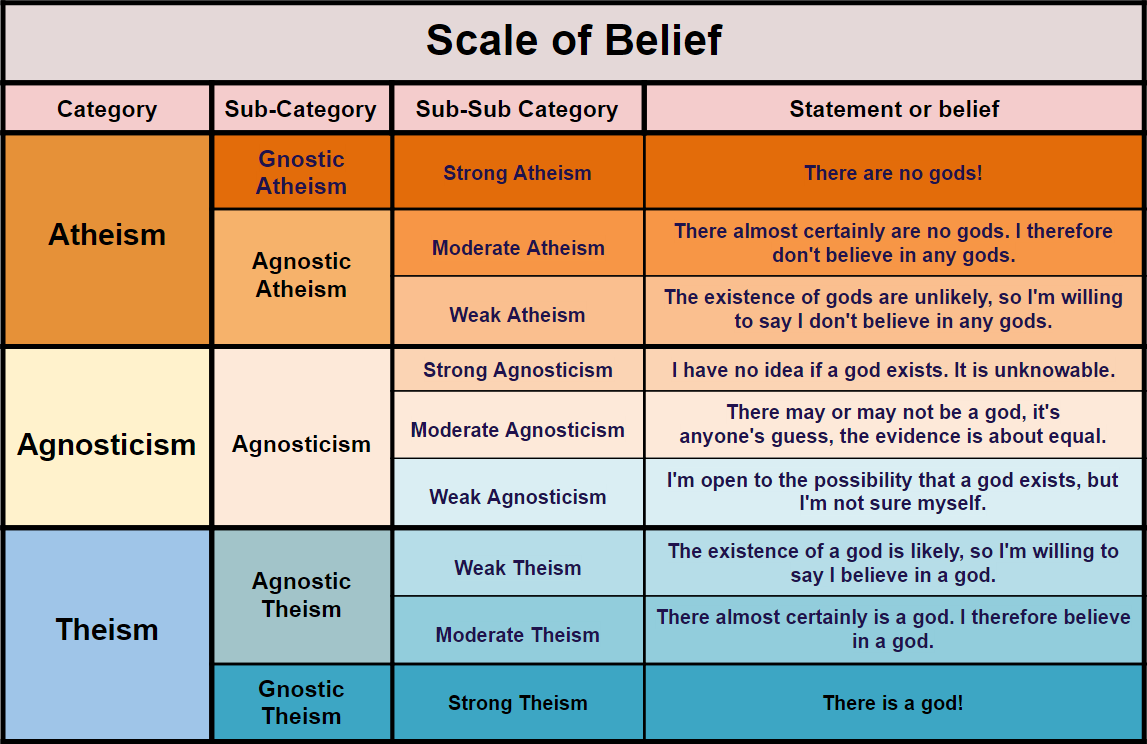
Passion

🔥 Central Passionist
Passion is the deeply-rooted love for a specific calling that not only fuels intense emotional commitment but also demands the willingness to make sacrifices, embodying the balance between fervor and the conscious choice to "pick up one's cross" for a greater purpose.
At School Alive, “Ignite Your Passion” can be interpreted as encouraging students to discover and pursue the God-given gifts and passions that align with their purpose in Christ.
When passions are directed toward serving God and others, the slogan fits within a biblical framework. The caution lies in ensuring that “passion” is understood not as unchecked emotion or sinful desire but as a fervent commitment to God’s will, grounded in Scripture.
Here is a list of Bible verses that mention the word "passion," taken from various translations (like the ESV) where "passion" is used:
1. Romans 1:26 - For this reason God gave them up to dishonorable passions. For their women exchanged natural relations for those that are contrary to nature...
2. Galatians 5:24 - And those who belong to Christ Jesus have crucified the flesh with its passions and desires.
3. Colossians 3:5 - Put to death therefore what is earthly in you: sexual immorality, impurity, passion, evil desire, and covetousness, which is idolatry.
4. 1 Thessalonians 4:5 - Not in the passion of lust like the Gentiles who do not know God.
5. 2 Timothy 2:22 - So flee youthful passions and pursue righteousness, faith, love, and peace, along with those who call on the Lord from a pure heart.
6. Titus 2:12 - Training us to renounce ungodliness and worldly passions, and to live self-controlled, upright, and godly lives in the present age.
7. Titus 3:3 - For we ourselves were once foolish, disobedient, led astray, slaves to various passions and pleasures, passing our days in malice and envy, hated by others and hating one another.
8. James 4:1 - What causes quarrels and what causes fights among you? Is it not this, that your passions are at war within you?
9. James 4:3 - You ask and do not receive, because you ask wrongly, to spend it on your passions.
10. 1 Peter 1:14 - As obedient children, do not be conformed to the passions of your former ignorance.
11. 1 Peter 2:11 - Beloved, I urge you as sojourners and exiles to abstain from the passions of the flesh, which wage war against your soul.
12. 1 Peter 4:2-3 - So as to live for the rest of the time in the flesh no longer for human passions but for the will of God. For the time that is past suffices for doing what the Gentiles want to do, living in sensuality, passions, drunkenness, orgies, drinking parties, and lawless idolatry.
These verses generally emphasize the negative connotations of sinful, uncontrolled passions (typically connected with fleshly desires or lusts). However, the context of the word "passion" in Scripture suggests that passions should be surrendered to the will of God, transformed, and redirected toward godly purposes.
The phrase “Ignite Your Passion” can be understood in a way where the focus is on transforming and redirecting passions. In this sense, “igniting” could imply a refining or burning away of worldly, sinful passions, which are often warned against in Scripture, and instead, fueling a new passion for God and His purposes.
The Bible speaks of both purifying and reorienting passions (Romans 12:11). This could be understood as igniting godly passion, replacing sinful desires with fervor for God’s work. 2 Timothy 1:6 talks about “fanning into flame” the gift of God, suggesting a proactive effort to stir up or ignite godly passion in our lives.
“Ignite Your Passion” could symbolize letting go of (or burning up) worldly passions and replacing them with a zeal and fire for God. This aligns with Galatians 5:24, which speaks of crucifying the flesh with its passions and desires, and could suggest that once those sinful passions are laid aside, we are free to burn brightly for God’s kingdom.
This approach to the phrase helps communicate that true passion is not self-serving or worldly but is transformed by the Holy Spirit for God’s glory. Passion becomes a deeply-rooted love for a specific calling, fueling a commitment that balances fervor with the willingness to “pick up one’s cross” for a greater purpose (Matthew 16:24), just as Christ demonstrated in His passion for our salvation.